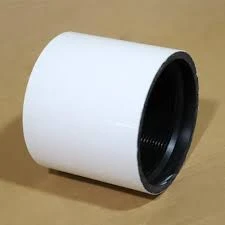- Afrikaans
- Albanian
- Amharic
- Arabic
- Armenian
- Azerbaijani
- Basque
- Belarusian
- Bengali
- Bosnian
- Bulgarian
- Catalan
- Cebuano
- Corsican
- Croatian
- Czech
- Danish
- Dutch
- English
- Esperanto
- Estonian
- Finnish
- French
- Frisian
- Galician
- Georgian
- German
- Greek
- Gujarati
- Haitian Creole
- hausa
- hawaiian
- Hebrew
- Hindi
- Miao
- Hungarian
- Icelandic
- igbo
- Indonesian
- irish
- Italian
- Japanese
- Javanese
- Kannada
- kazakh
- Khmer
- Rwandese
- Korean
- Kurdish
- Kyrgyz
- Lao
- Latin
- Latvian
- Lithuanian
- Luxembourgish
- Macedonian
- Malgashi
- Malay
- Malayalam
- Maltese
- Maori
- Marathi
- Mongolian
- Myanmar
- Nepali
- Norwegian
- Norwegian
- Occitan
- Pashto
- Persian
- Polish
- Portuguese
- Punjabi
- Romanian
- Russian
- Samoan
- Scottish Gaelic
- Serbian
- Sesotho
- Shona
- Sindhi
- Sinhala
- Slovak
- Slovenian
- Somali
- Spanish
- Sundanese
- Swahili
- Swedish
- Tagalog
- Tajik
- Tamil
- Tatar
- Telugu
- Thai
- Turkish
- Turkmen
- Ukrainian
- Urdu
- Uighur
- Uzbek
- Vietnamese
- Welsh
- Bantu
- Yiddish
- Yoruba
- Zulu
Understanding the Role of Tubing Pup Joints in Oil and Gas Operations
Understanding Tubing Pup Joints A Crucial Component in Oil and Gas Operations
In the oil and gas industry, various components work together within drilling and production systems, each playing a vital role in ensuring efficiency and safety. Among these components, tubing pup joints are essential for maintaining the integrity of the wellbore and facilitating the effective transport of hydrocarbons.
What are Tubing Pup Joints?
Tubing pup joints are short lengths of pipe used to adjust the overall length of a tubing string within a well. Typically, they are manufactured with the same outer diameter and thread specifications as standard tubing. Their primary purpose is to allow for adjustments in the tubing string's length, which can be crucial for accommodating particular engineering or operational requirements.
These joints are commonly used in various situations, such as when there are changes in well geometry or when additional equipment needs to be installed. Rather than removing existing sections of tubing, which can be time-consuming and labor-intensive, operators can simply add pup joints to achieve the desired tubbing length.
Construction and Material
tubing pup joint

Tubing pup joints are made from robust materials like carbon steel or stainless steel, designed to withstand high pressures and harsh conditions commonly found in oil and gas wells. The joints are typically designed to meet specific standards set out by organizations such as the American Petroleum Institute (API), ensuring they can handle the operational stresses encountered during drilling and production.
Applications in the Field
Tubing pup joints find application in various scenarios. They can be used in vertical wells, horizontal wells, and even in wells that have undergone hydraulic fracturing. For instance, in a horizontal well, pup joints may be used to navigate changes in inclination, helping to maintain optimal flow rates and pressure levels. Additionally, during interventions or maintenance activities, pup joints can be added or removed quickly, minimizing downtime and reducing costs.
Moreover, the installation of pup joints is not only beneficial during the initial completion of a well but also during workover operations. These joints allow for flexibility in the tubing string’s configuration, accommodating additional subsurface equipment like packers or sensors, which play critical roles in production optimization and reservoir management.
Conclusion
In conclusion, tubing pup joints are indispensable components in the oil and gas industry, providing the flexibility needed to adjust tubing strings according to operational requirements. Their robust construction, adherence to industry standards, and versatility in various applications make them crucial for the successful drilling and production of hydrocarbons. As the industry continues to evolve, the significance of proper tubing management, including the strategic use of pup joints, will likely increase, further enhancing the efficiency and safety of oil and gas operations. Understanding and implementing these components effectively can lead to improved production outcomes and reduced operational costs, making them an essential focus for engineers and operators alike.
-
Tubing Pup Joints: Essential Components for Oil and Gas OperationsNewsJul.10,2025
-
Pup Joints: Essential Components for Reliable Drilling OperationsNewsJul.10,2025
-
Pipe Couplings: Connecting Your World EfficientlyNewsJul.10,2025
-
Mastering Oilfield Operations with Quality Tubing and CasingNewsJul.10,2025
-
High-Quality Casing Couplings for Every NeedNewsJul.10,2025
-
Boost Your Drilling Efficiency with Premium Crossover Tools & Seating NipplesNewsJul.10,2025







